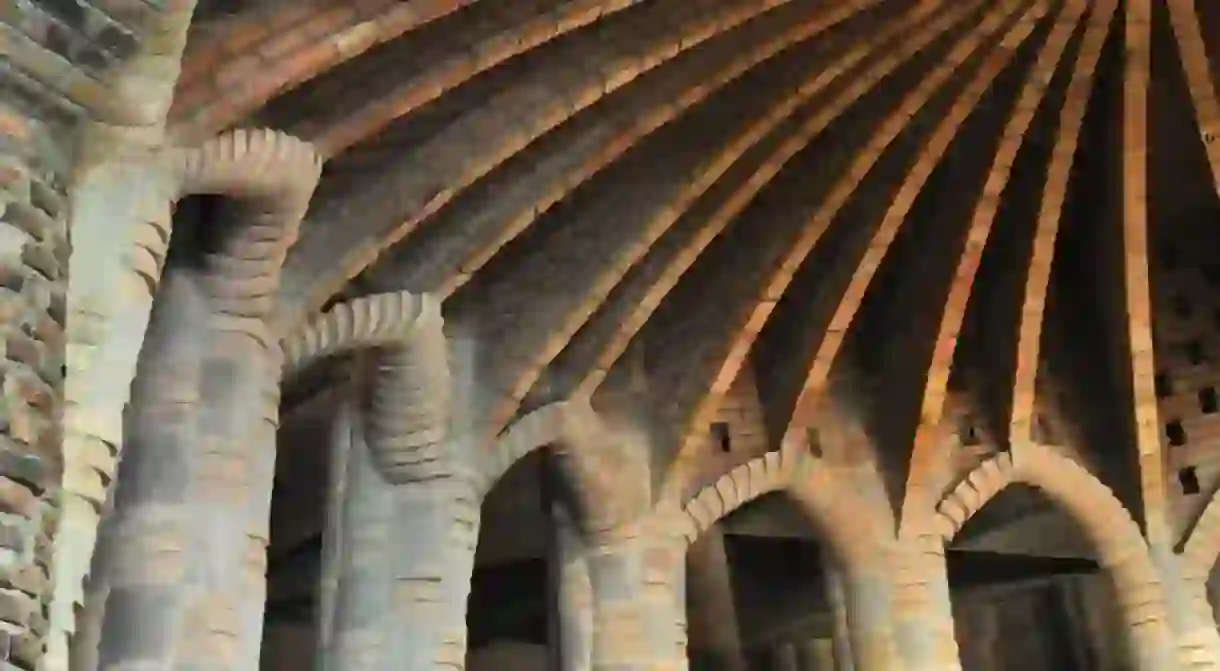A Brief Introduction to Colonia Güell, Gaudi's Best Kept Secret

Everyone knows of Antoni Gaudí, the Catalan architect responsible for some of the Barcelona’s most iconic landmarks, including the Sagrada Família and Casa Batlló. However less is known of his work outside the city and the Colonia Güell remains one of the least appreciated examples. Read on to find out how this curious construction came into existence.
A Historically Significant Project
Catalonia has long been the historic industrial backbone of Spain, home to many of the country’s most important factories and one of its largest workforces. Back in the late 19th century, at the height of Spain’s industrial revolution, the success of Catalan industry caused new problems for local factory owners: the growing demand for land was increasing the cost of constructing factories inside the city. However, unless there was an abundant workforce on hand elsewhere, the factories were tied to the city.

A turning point arrived when factory owners began to construct what were referred to as ‘worker colonies’ – large estates comprising both a factory as well as housing for the workers, schools, hospitals, markets and shops. It soon became apparent that it more economical to build an entire estate in the countryside than to build a factory in the city.
Located in the small community of Santa Coloma de Cervelló, construction on the Colonia Güell began in 1890 under the instruction of Catalan entrepreneur Eusebi Güell. A successful businessman, Güell was also a social innovator who cared about the working conditions and well-being of his employees. In fact, another site in Barcelona which bears his name – the Park Güell – was designed as a utopian private estate located away from the smog of the inner city. His vision for the Colonia Güell included creating places for the arts and culture, as well as relatively decent accommodation for the time.

A Testing Ground For Gaudí
A great appreciator of architecture and supporter of the Catalan Modernist movement, Güell requested that his friend Antoni Gaudí, as well as other notable architects from the time, help design the Colonia Güell. Specifically, Güell asked Gaudí to set to work on designing the colony’s church and is rumoured to have told the architect he had complete liberty to do whatever he pleased.
For Gaudí, this was an opportunity to practice some of his most innovative techniques and designs – many of which would later be used in the construction of the world-famous Sagrada Família. Some of the most distinctive elements of Gaudí’s design were incorporated into the church, including leaning pillars and catenary arches, as well as the use of organic shapes and symbolism.

The original design of the church called for the construction of two naves, lower and upper, topped by different towers and a 40m high central dome. A model of the design, which was placed in a pavilion nearby the construction site, showed a striking resemblance to the final design of the Sagrada Família. However, in 1914 the project was brought to an end when Güell decided to withdraw funding for the construction of the church. The existing nave – the only one to have been constructed – was consecrated just a few years later, by which point the church had begun to be known locally as the ‘crypt’ owing to its single chamber structure.
In 2005 the Colonia Güell was declared a UNESCO World Heritage site alongside six other masterpieces by Antoni Gaudí. Despite this it remains relatively unknown to the public and attracts nowhere near the same attention as counterparts in Barcelona. However, for architecture aficionados and admirers of Gaudí’s work it is one of his most fascinating and intriguing masterpieces.













